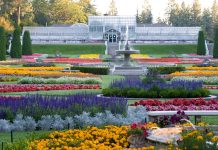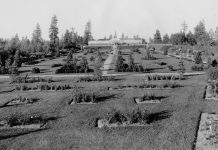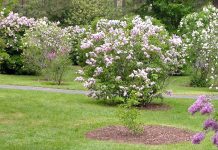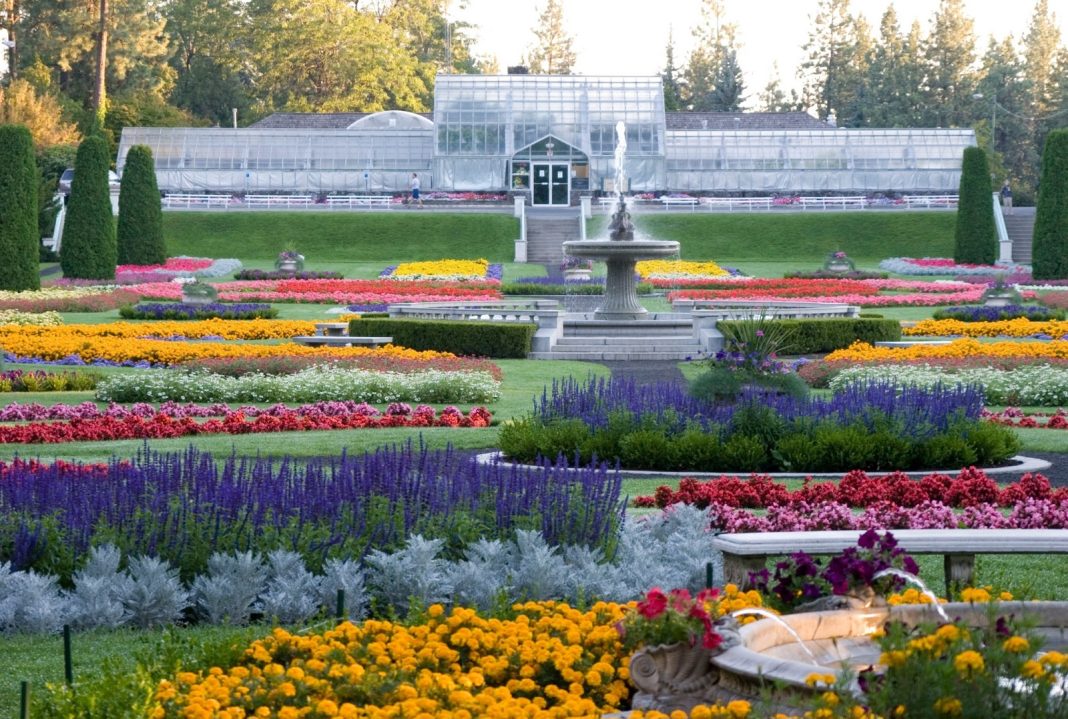What’s truly in a name? Once upon a time, Spokane itself was known as Spokan Falls before the “e” was added to Spokane in 1883, and “Falls” was dropped in 1891. Still, the meaning behind the name “Children of the Sun” remained, and after all, as the historic playwright William Shakespeare once so eloquently demonstrated, “a rose by any other name would smell as sweet.” Similarly, Spokane has bloomed just as sweetly, even with the name change.
And it’s not the only name change that has occurred in the region’s formative years. For instance, Manito Park was originally Montrose Park, which means mountain of roses, upon its establishment in 1886. It was later changed to Manito Park in 1903 after undertaking new ownership, with Manito meaning “spirit of nature.” The new name seemed to imbue this horticultural haven more accurately because while the roses in Manito are quite magnificent, there are plenty more flowers and plants to stop and smell in the many gardens that make up this botanical oasis.
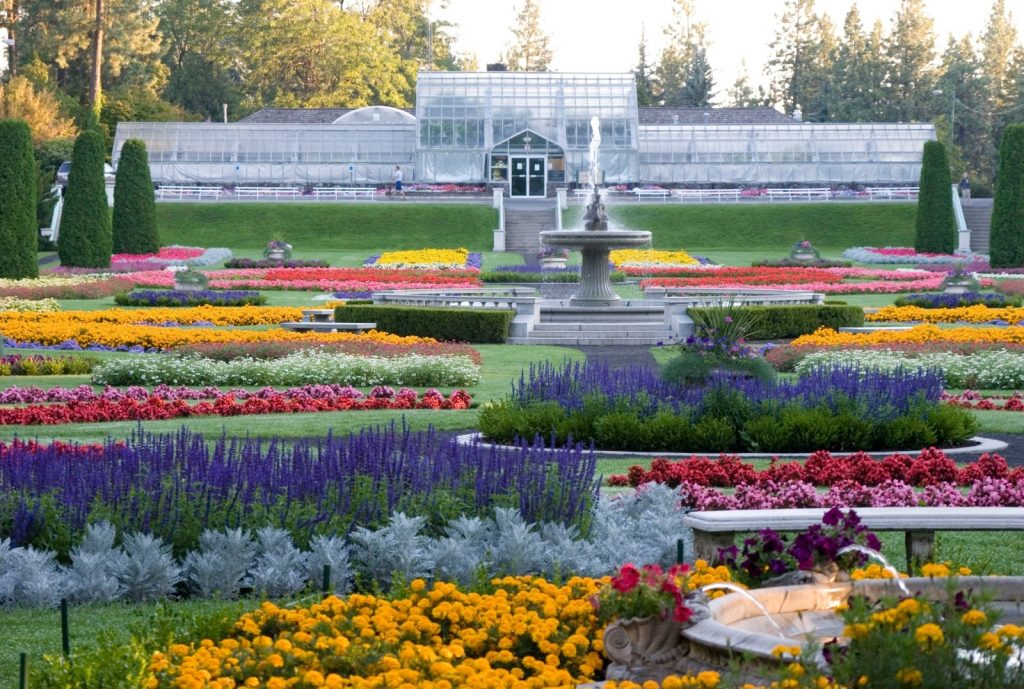
Duncan Gardens in Manito Park
The most spectacular of Manito’s gardens, Duncan Gardens, was sculpted in a classical European Renaissance style. With such splendor, one can’t help but feel like royalty while perusing the grounds, taking in the garden’s three encompassing acres that include manicured turf areas and vast displays of colorful annual bedding plants.
Awash in colorful blooms, the gardens further entice visitors with their gentle paths, which are perfect for a slow-paced walk amid its sprawling beauty. In addition, the garden’s bilateral symmetry, central water feature, and geometrical planting beds are reminiscent of the Mirabell Gardens in Salzburg, Austria, made famous in the critically acclaimed “Sound of Music.” All of these amenities combined make Duncan Gardens an extremely popular location for weddings and photography.
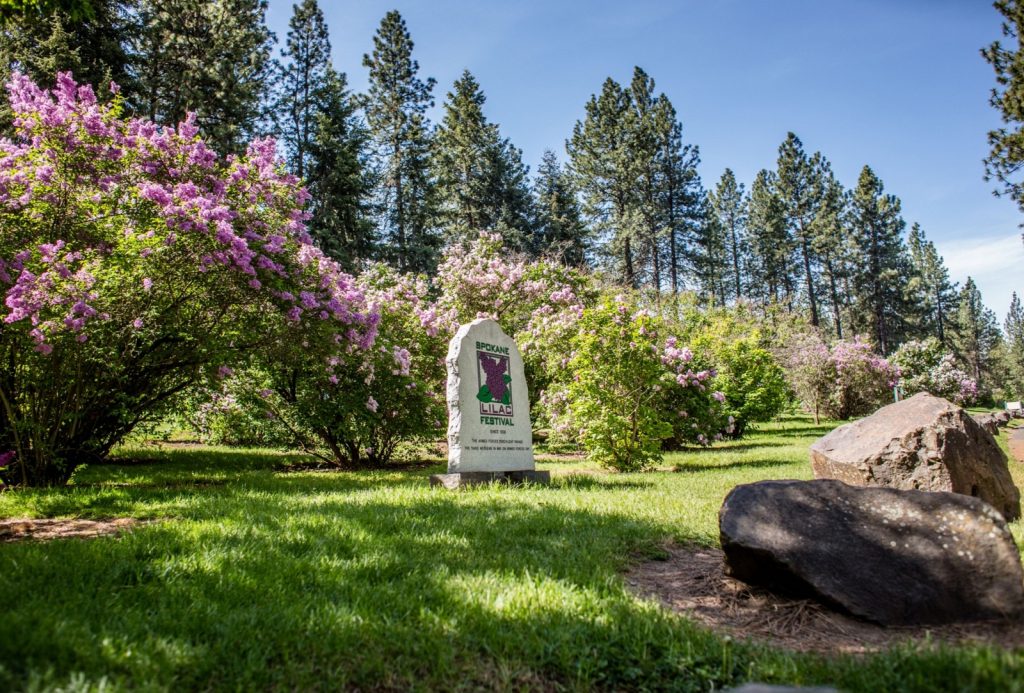
Manito’s Lilac Garden
It only makes sense that a well-established Lilac City would feature its own namesake, so Spokane naturally boasts its crown jewel in its Lilac Garden at Manito Park. This fragrant paradise contains well over 100 named cultivars from 23 distinct species, making it one of the most important lilac gardens in the West. Many of these shrubs’ roots in the city run deep as the garden was first established in 1912. By 1938, there were 144 of the shrubs in the park, and Spokane was beginning to promote itself around the globe as “The Lilac City,” with its first annual Spokane Lilac Festival looming just around the corner.
As the celebration grew each year, so did the pride in this beloved community staple of pinks and purples. Eventually, in 2003, the Spokane Lilac Society contributed to Manito Park to extend the Lilac Garden. This addition to the garden would become home to a rare new double pink lilac called Syringa vulgaris Spokane, a new variation genuinely unique to the city — a lilac of its very own.
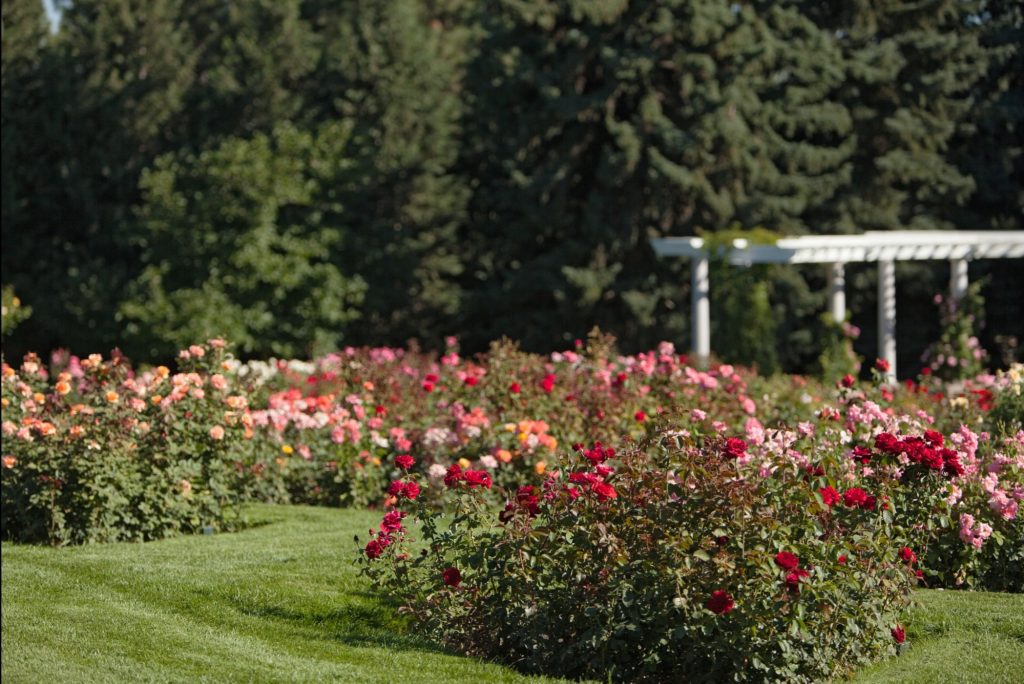
Rose Hill at Manito Park in Spokane
A joint venture between the Spokane Rose Society and the Spokane Parks and Recreation Department, Manito Park’s Rose Hill is the city’s literal rose-kissed oasis. These verdant hills are dedicated to all things roses, featuring over 150 varieties of this particular flower. Types of roses in the garden include hybrid tea, grandiflora, floribunda, miniature roses, and old-fashioned roses. As the only place in the city providing a rose of every color experience, it remains one of the city’s favorite locations for weddings, picnics, and photography.
For the past two decades, Rose Hill has consistently impressed not just the residents of Spokane but also the nation. Not only has it received the All-American Rose Selections (AARS) Outstanding Maintenance Award for 20 consecutive years, but in 2007, it also achieved the ultimate honor when it was named number one in the nation out of 125 total gardens for Outstanding Display Garden by AARS.
Manito Park’s Joel E. Ferris Perennial Garden
Providing an excellent example of the tremendous variety of colors, textures, and flower types found in perennials is the Joel E. Ferris Perennial Garden, or Ferris Garden for short. This blooming palette of plants is home to a seasonal variety of colorful displays that begins every year in early spring and continues into late autumn. Not quite as formal as the aforementioned Duncan Gardens, the Ferris Garden is its natural balance as its 300-plus plant species grow much more freely.
The garden was named after Joel E. Ferris, a devoted and respected park board member of many years before he became ill and was forced to resign in 1960, shortly before his death. After his passing, fellow board members decided to name the garden north of the greenhouses in his honor. Eventually, the garden experienced a significant expansion in 1996, when the perennial bedding space was quadrupled. Now, visitors can enjoy a constantly evolving tapestry of flowers throughout the seasons, with large beds showcasing a vibrant mix of perennials and smaller trees. This area offers a continual feast for the eyes, from spring’s bulbs and primroses to the fall’s asters.
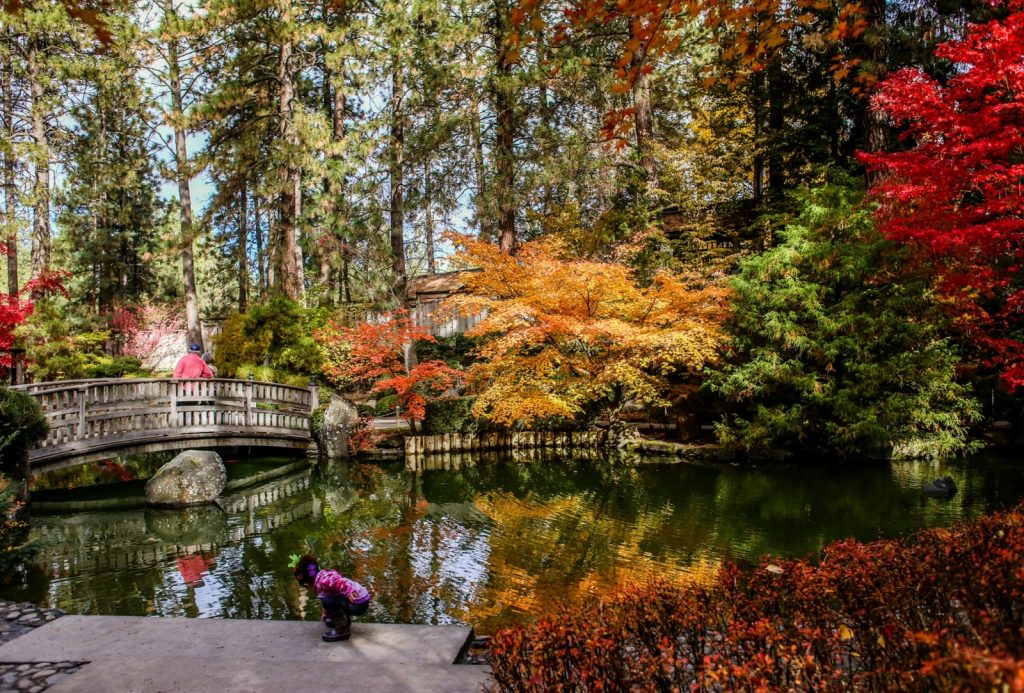
Find Nishinomiya Tsutakawa Japanese Garden at Manito Park
Nature, tranquility, and beauty come together at Manito Park’s Nishinomiya Tsutakawa Japanese Garden, making it one of the most peaceful places in the city. The garden was completed in 1974 and symbolizes the friendship of Spokane and its sister city of Nishinomiya, Japan. Its name honors the city of Nishinomiya and the man who founded the relationship between the two, Ed Tsutakawa.
Renowned Japanese landscape architect Nagao Sakurai was enlisted to design the garden in 1967. At the time, he was in charge of the grounds of the Imperial Palace. He began construction on the waterfall and pond in 1970. However, he tragically and unexpectedly died of a stroke in 1973. Two landscape architects from Kobe, Japan, were contracted to complete the garden, which was dedicated to both cities on May 17, 1974.
As tranquility is revered within the garden grounds, there are outlined rules for the Nishinomiya Tsutakawa Japanese Garden. These rules include no food, no pets, no feeding or touching of the pond’s koi fish, no running, cycling, or skating, and no commercial or portrait photography allowed. It is only open from April through October from 10 a.m. until 6 p.m.
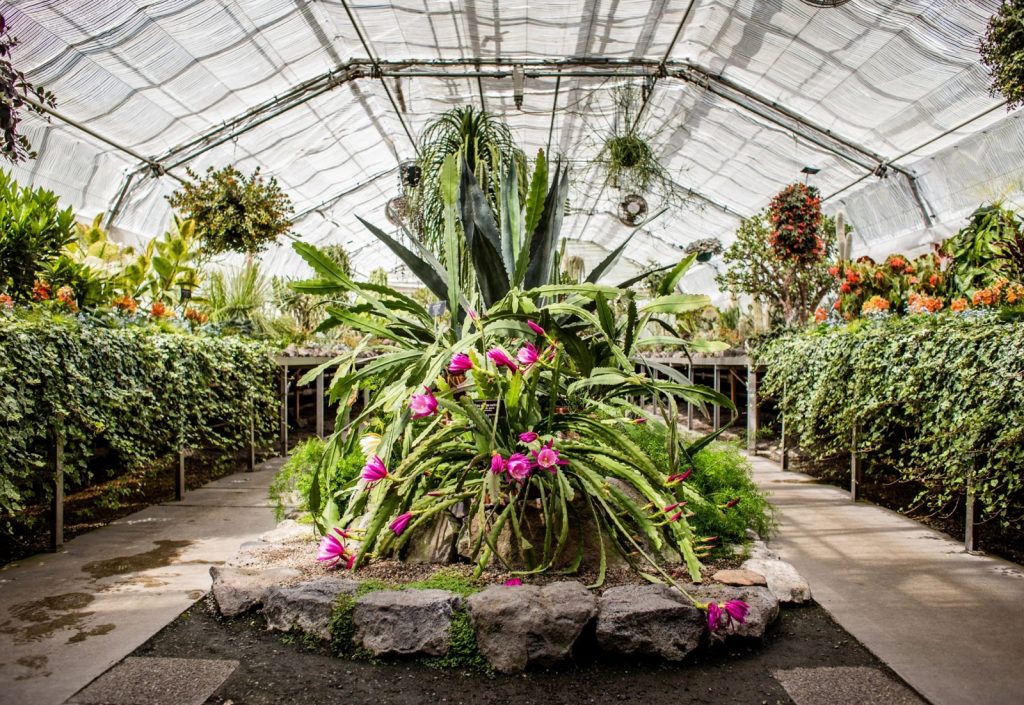
Moore-Turner Heritage Gardens in Spokane’s Manito Park
The Moore-Turner Heritage Gardens began in 1889 when Frank Rockwood Moore and his wife purchased a section of the South Hill’s wooded hillside to build his home. The hillside was cleared and replanted, and Moore constructed terraces and retaining walls on the property that would become the future site of the Heritage Gardens. In 1896, U.S. Senator George Turner purchased the home and its grounds. A decade later, he hired landscape architect Hugh Bryan to transform the gardens, adding pergolas, an arbor, a conservatory, and a tea house that reflected the then-popular Arts and Crafts movement. Upon its completion, the gardens became the favorite site of many summer parties and flourished until Judge Turner’s death in 1932.
The Spokane Park Board later bought the property in 1945. By this point, the house had been demolished five years prior, and the gardens fell into disrepair. They were eventually completely grown over and forgotten. A later ice storm in the late 1990s would lead to the re-discovery of the gardens. Following the identification of some cultivated flowers and plants, Parks and Recreation staff began a community master planning process to restore the gardens that was approved in 2000. However, reconstruction wouldn’t start until 2005. Some historic plant materials survived, and those planted were reintroduced based on historical research on what had previously been found on the grounds. Life was once again breathed back into the hillside revitalized hillside.
With a plethora of gardens to explore, Manito Park has become a haven for both floral enthusiasts and casual visitors. From Rose Hill’s classic elegance to Duncan Gardens’ vibrant displays, each area offers a unique sensory experience as guests partake in a captivating journey through these diverse landscapes. The experience is made even more complete with a visit to Manito Park’s greenhouse, the Gaiser Conservatory, which features a dazzling display that changes with the seasons of tropical, sub-tropical and temperate plant specimens from around the world.






